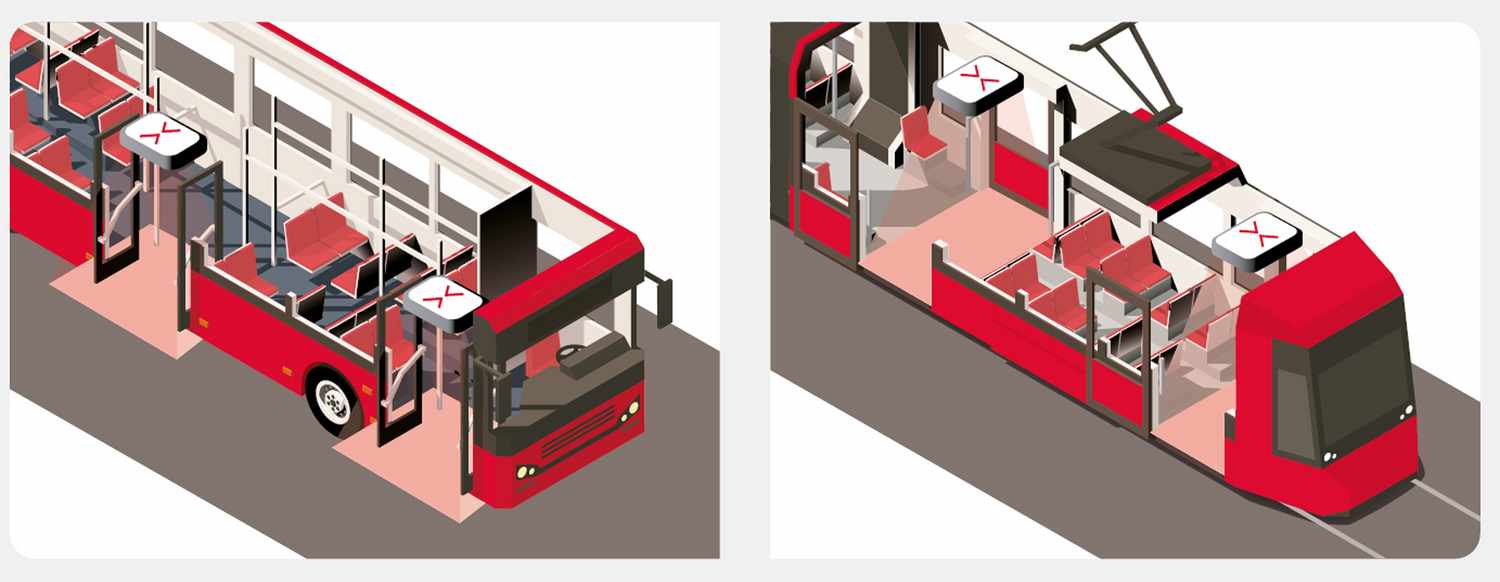Bring Your Operations to the Next Level With Our 3D Sensor for APC
Xovis knows that designing the transit concepts of tomorrow is a demanding and time-consuming task for public transportation operators. If you want to make decisions based on sound economics, you need a solid foundation in order to do so: namely, data from automatic passenger counting (APC) technology. How you get your data matters, and that is where our 3D sensor PCT1 comes into play.

The PCT1 is your point of departure for successful operations
Highly sophisticated planning…
How frequently does this tram need to run between Rose Hill and Town Hall? Shall we drop the route to North Point all together? When should the last bus from Moonbeam Station depart? How does the passenger flow between tracks 5 and 6 move around? Which long-distance routes overlap best with these short-distance ones – can we interline those three? Stops, patterns, trips and blocks: each schedule has its own – and a timetable is just the tip of the iceberg. These broadly formulated questions as well as more complex ones are central in optimizing daily operations.
…requires reliable data
Handling these demanding economic and ecological questions meaningfully while at the same time achieving customer and employee satisfaction is quite the balancing act. Your backbone needs to be solid data. Knowing the actual number of passengers, i.e. accurately counting passengers is just the start of a thorough passenger analysis. You also need to know details such as where and when passengers get on and off a train or bus in order to properly plan route frequency and efficiency, decide on appropriate operating hours, and optimize contingent processes. PCT1 presents you with key performance indicators quickly and cleanly.
The advantages of automatic passenger counting
The advantages of automatic passenger counting (APC) are myriad: thanks to built-in 3D sensors, passenger flow can be easily measured – and the data readily and reliably collected. It is more exact and efficient than any analog form of data collection, such as surveys or naked-eye observations. The PCT1 allows you to focus on your core mission, whether that be your operations, timetable development, maintenance, or a combination thereof. Our sensors place the data you need to make optimal decisions right at your fingertips, without you having to use any shoe leather.
Xovis technology enters the public transport industry
The prerequisite for this data-driven approach is, of course, the accompanying technology. Xovis has been occupied with the challenge of people counting and people flow measurements since 2008. We've been the partner of airports, retail, restaurants, hotels and other enterprises throughout; all of whom have a serious interest in knowing their exact passenger/customer/visitor flow. That is why train stations as well as subway or metro stations already fall within the scope of our 3D sensors.
But passenger flow does not end on the platform – it is part of a much bigger system. Passenger analysis must be brought to the next level of digitalization. This is why we are bringing our experience in people counting and people flow measurements, plus our expertise in 3D sensors, with us into the public transport industry. Our PCT1 sensors are newly minted for public transportation – ready, robust and certified.
The PCT1 sensor reliably counts passengers in public transit vehicles
We have created the PCT1 with public transportation in mind: it is specifically developed for buses, trains, trams, subways/metros and gondolas. The PCT1 sensor is fit for daily use, has a solid industrial design, and only requires a minimal ceiling height while still maintaining a wide field of view. That means that even just one of our sensors can cover a wide door. This is crucial for accurate passenger detection even in challenging environments like crowded door areas (e.g. during rush hour). The PCT1 makes sure that you have the data you need, when you need them – rain or shine.
Are you excited about the prospect of sophisticated, data-driven transit operation optimization? Then you are in the right place.
Get to know more about the latest addition to our sensor family, PCT1.
Contact us
You have questions? We will be happy to answer them.